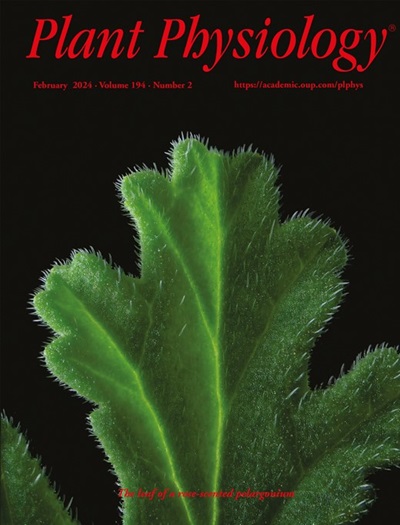A module involving SEED SHATTERING 1 facilitates seed shattering by suppressing lignin biosynthesis in rice
IF 6.5
1区 生物学
Q1 PLANT SCIENCES
引用次数: 0
Abstract
Reduced seed shattering is a key goal in crop domestication and improvement. Seed shattering 1 (Sh1) was parallel selected during the domestication of the Poaceae family. Investigating the regulatory network of OsSh1 in controlling seed shattering in rice (Oryza sativa L.) offers biological insights and potential for agricultural applications. Here, we identified a transcription factor of CONSTANS, CONSTANS-LIKE, and TOC1(CCT) family, OsCCT22, that physically interacts with OsSh1 in rice. oscct22 mutants exhibited a phenotype similar to ossh1 mutants, characterized by incomplete development of abscission layers and reduced seed shattering ability. Transcriptomic analysis revealed that OsSh1 and OsCCT22 jointly regulate the expression of genes involved in lignin biosynthesis. Notably, transcription of the cinnamyl alcohol dehydrogenase (CAD) gene OsCAD2, caffeic acid O-methyltransferase (OsCOMT), and O-methyltransferase 16 (ROMT-16) was directly inhibited by OsSh1 binding to their key binding motif. This repression was enhanced by the interaction between OsCCT22 and OsSh1. Additionally, our study suggests that OsSh1 regulates the transcription of OsCAD2 by modulating histone methylation modifications near the first intron. Loss-of-function mutations in OsCAD2 led to the formation of more extensive abscission layers and a significant reduction in lignin deposition, resulting in natural seed shattering. Our findings reveal that the OsCCT22-OsSh1-OsCAD2 module affects the lignin deposition of the abscission zone and seed shattering in rice and provide a target for the genetic improvement of seed shattering in crop breeding.一个涉及SEED SHATTERING 1的模块通过抑制水稻木质素的生物合成来促进种子粉碎
减少碎粒是作物驯化和改良的关键目标。禾本科植物在驯化过程中平行选择了种子破碎1 (Sh1)基因。研究水稻(Oryza sativa L.)中OsSh1在控制种子碎裂中的调控网络提供了生物学见解和农业应用潜力。在这里,我们确定了CONSTANS、CONSTANS- like和TOC1(CCT)家族的一个转录因子OsCCT22,它与水稻中的OsSh1发生物理相互作用。Oscct22突变体表现出与ossh1突变体相似的表型,其特征是脱落层发育不完全,种子破碎能力降低。转录组学分析显示OsSh1和OsCCT22共同调控木质素生物合成相关基因的表达。值得注意的是,肉桂醇脱氢酶(CAD)基因OsCAD2、咖啡酸o -甲基转移酶(OsCOMT)和o -甲基转移酶16 (ROMT-16)的转录被OsSh1与其关键结合基元的结合直接抑制。OsCCT22和OsSh1之间的相互作用增强了这种抑制。此外,我们的研究表明OsSh1通过调节第一个内含子附近的组蛋白甲基化修饰来调节OsCAD2的转录。OsCAD2的功能缺失突变导致更广泛脱落层的形成和木质素沉积的显著减少,导致种子自然碎裂。我们的研究结果表明,OsCCT22-OsSh1-OsCAD2模块影响水稻脱落区木质素沉积和落粒,为作物育种中落粒的遗传改良提供了靶点。
本文章由计算机程序翻译,如有差异,请以英文原文为准。
求助全文
约1分钟内获得全文
求助全文
来源期刊

Plant Physiology
生物-植物科学
CiteScore
12.20
自引率
5.40%
发文量
535
审稿时长
2.3 months
期刊介绍:
Plant Physiology® is a distinguished and highly respected journal with a rich history dating back to its establishment in 1926. It stands as a leading international publication in the field of plant biology, covering a comprehensive range of topics from the molecular and structural aspects of plant life to systems biology and ecophysiology. Recognized as the most highly cited journal in plant sciences, Plant Physiology® is a testament to its commitment to excellence and the dissemination of groundbreaking research.
As the official publication of the American Society of Plant Biologists, Plant Physiology® upholds rigorous peer-review standards, ensuring that the scientific community receives the highest quality research. The journal releases 12 issues annually, providing a steady stream of new findings and insights to its readership.
 求助内容:
求助内容: 应助结果提醒方式:
应助结果提醒方式:


